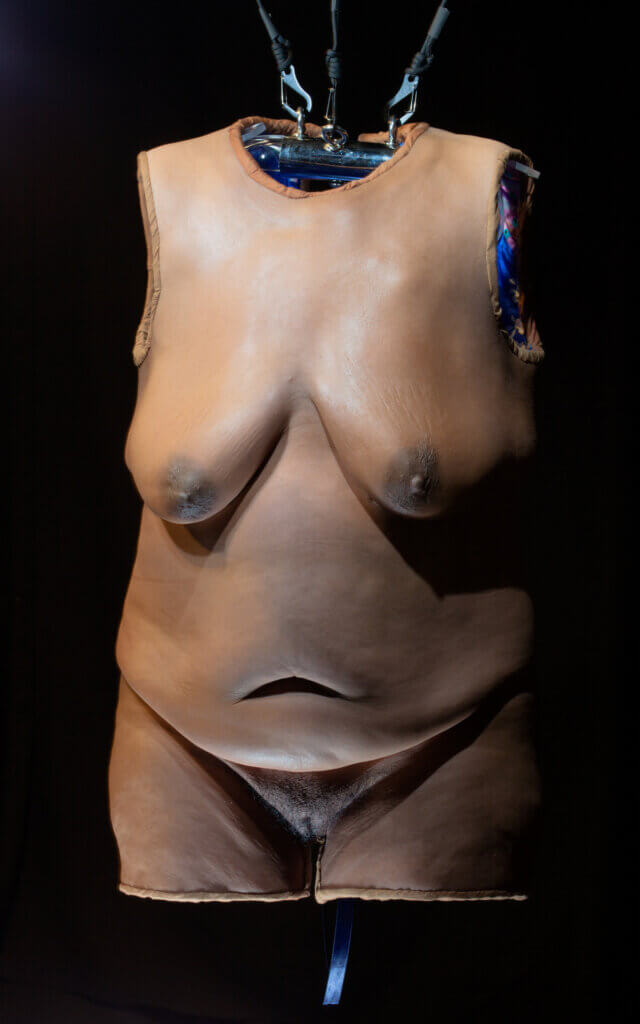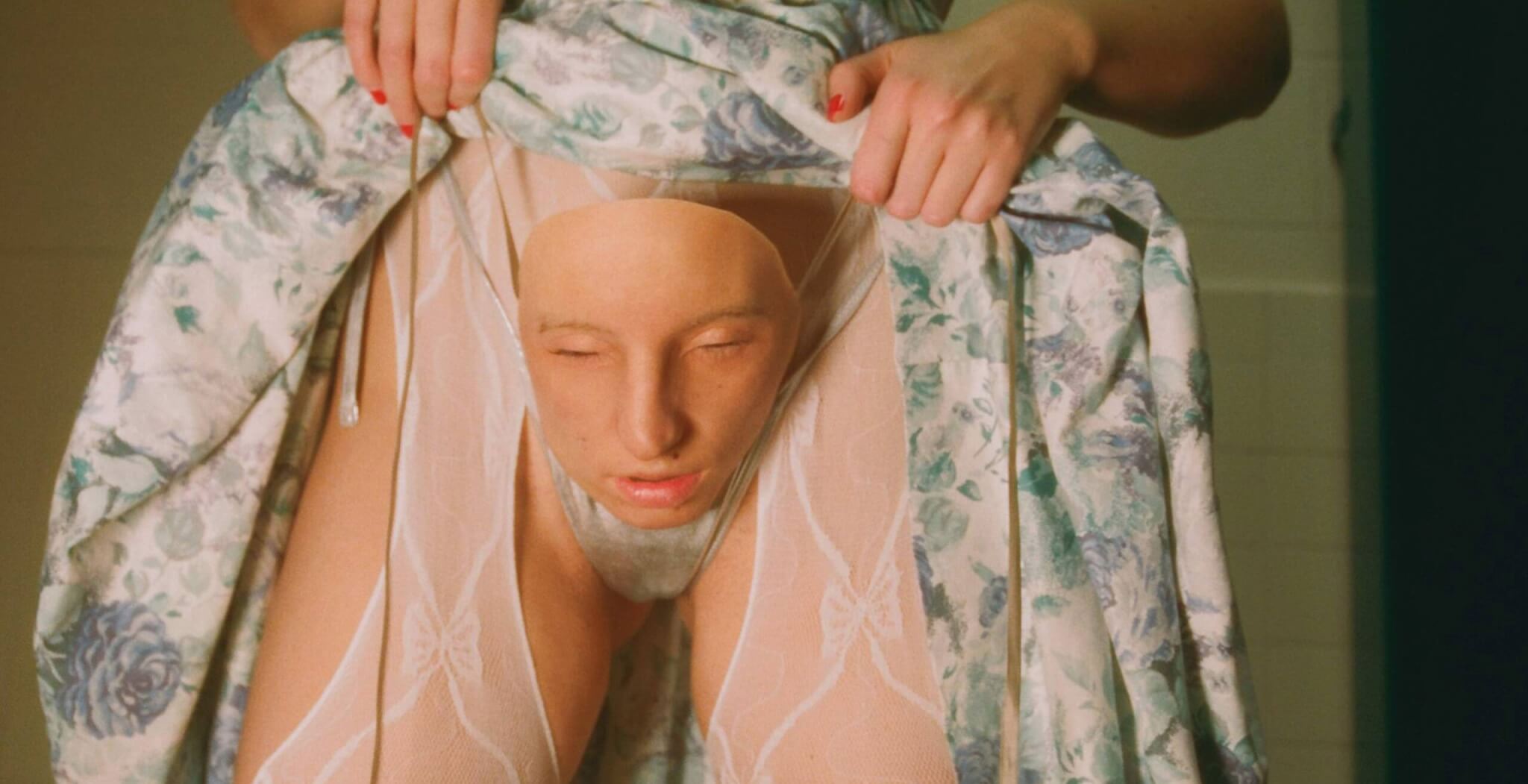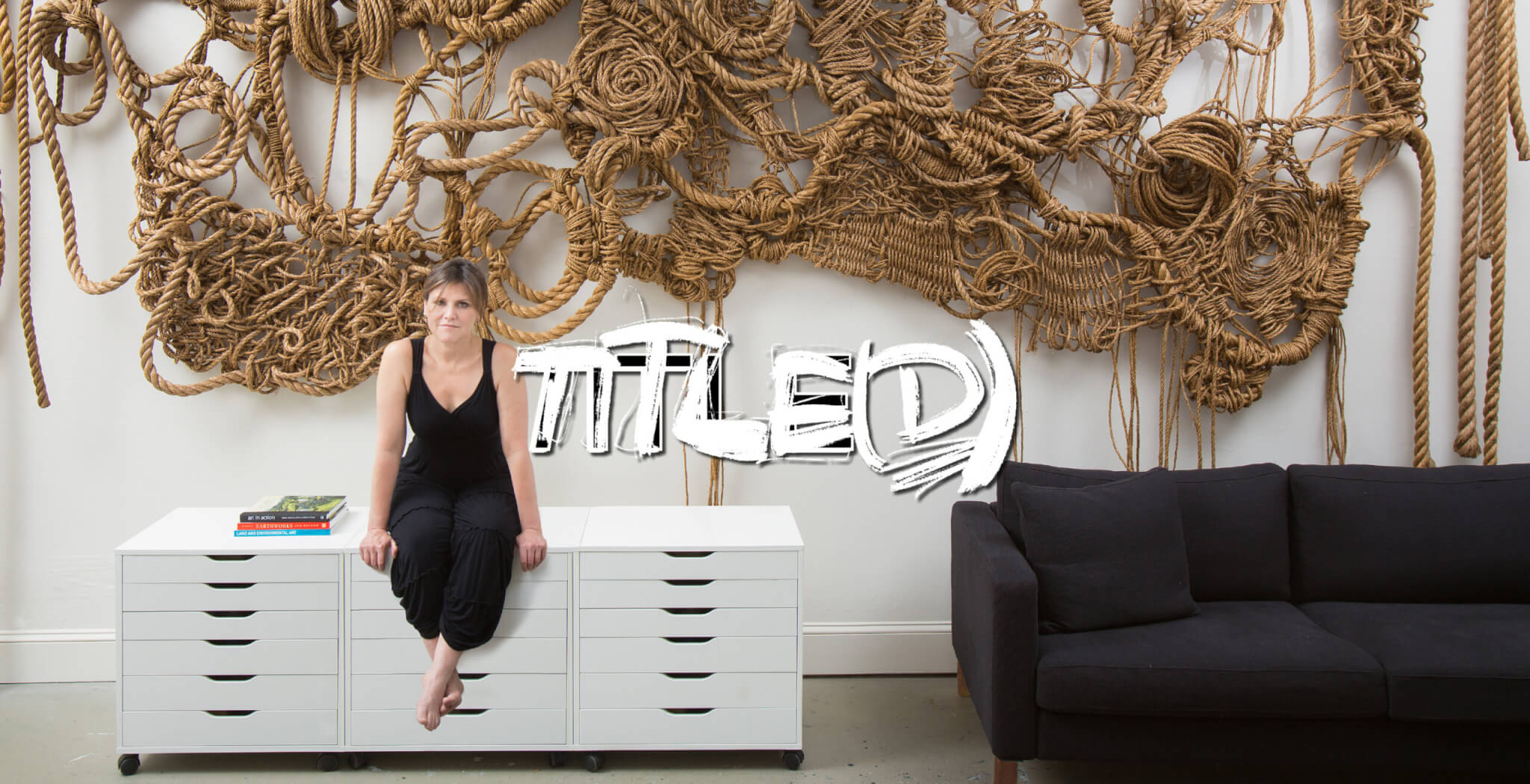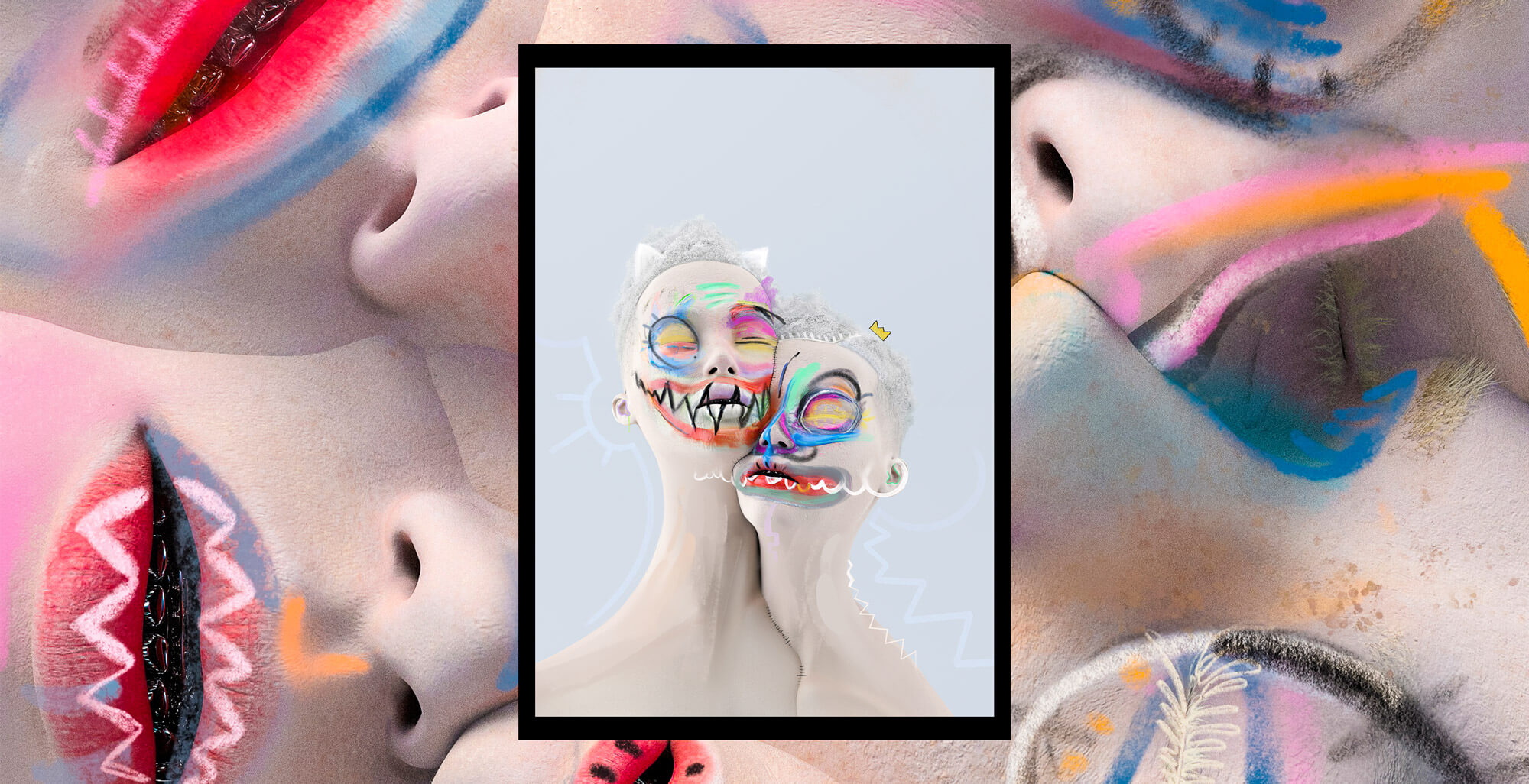In combination with other materials such as resin, plaster and latex, Sarah Sitkin and Esmay Wagemans are using silicone to replicate human skin, defending the idea that skin doesn’t define everything we are. The high consistency of silicone allows for malleable and flexible flesh-like textures, which is why Sitkin’s and Wagemans’s creations look and feel like wearing a second skin.
‘Second skin’ refers to any layer that feels natural, fits perfectly and feels compatible with our very own skin and what’s contained behind it — us. But if our real skin divides the internal from the external, then a second skin can mediate the entry and exit point between us and the non-us. While our skin is fixed, defined by factors we can’t really control, a second skin is a mouldable, movable layer on which experiences and identities of all kinds can be inscribed, changing the way we perceive ourselves.
That’s exactly what Sarah Sitkin suggested with her project Bodysuits. Volunteers meeting certain health requirements let Sitkin cast with meticulous precision their bodies. Layers and layers of silicone — enough to make up for suits that weighed between 10-40 pounds, depending on the person’s ‘mould’ — turned into hyperreal sculptures of human flesh that could be worn by visitors during her solo exhibition at the Superchief Gallery LA in 2018.

While it’s normal to think that each of us has a skin to shield behind, even though we live in a world that encourages plurality, Sitkin’s project indicates that our identity can be more fluid by exchanging our layers — that’s the beauty and at the same time the creepy side of technology: we can code ourselves and become many. The exhibition, after all, was “meant to communicate that our bodies are not the holders of our identity,” as Bill Dunleavy, co-founder of the gallery, said. Sitkin’s uncanny celebration of skins reveals how artists and technologies are resculpting our human identity and body.
Sarah Sitkin’s body of work is wide and her sculptures range from absolute human replicas to abstract ideas. One could argue that Bodysuits fostered a space for empathy, by encouraging visitors to try others’ skins. Other sculptures, however, are less about introducing the raw beauty of what is to be real and more about discovering macabre forms of humanity. The grotesque in every inch of our bodies. Her more experimental and obscure approach to sculpting got her to design the splitting mask of Billie Eilish for the Garage Magazine’s 2019 cover, a work directed by renowned artist Takashi Murakami, and to participate with duo Fecal Matter, known for their wicked fashion statement.

Going in a similar direction but more focused on morphing our physical embodiment whilst questioning the nature of human forms, Esmay Wagemans creates prosthetics — or better, facial and body accessories — that disproportionally enhance the body’s configuration. To know about Wagemans is to grasp that the artist is vocal about how politicised and restricted our body is, which view was crystallised when she designed the body architecture worn by Dutch singer and songwriter Sevdaliza for the cover of Glamcult magazine.
The silicone-based anatomy accentuated Sevdaliza’s ‘critical’ points by enlarging, even more, the proportions of her body that were already deemed as surpassing feminine standards. Wagemans’s ability to play with the body’s configuration of the corporeal and adhesive body pieces has got the attention of Solange, Rosalia and other personalities of the like who wear now her cellulose-like garments.
Interestingly, Sevdaliza has worked independently with both artists and that might be because of how Sitkin and Wagemans meander along dichotomies such as natural and artificial, soft and hard, vulnerable and protected, inside and outside — polarities that Sevdaliza herself addresses in her lyrics and videos and through her body. “I love to wear my body, I love to wear my skin — it’s so reflective of how you treat yourself, what you are and what you’ve experienced in life,” said the artist when she released her album ISON, which cover art was handmade and painted by Sitkin.
The sculpture of Sevdaliza dripping with sweat is so hyperrealistic that it’s hard to not think of it as a 3D object. In the same way, the attention to detail and exact replica of every pore and scar — and everything else that’s been falling in the category of ‘imperfections’ thanks to our culture of advertisement, Instagram and photoshop — make Sitkin’s bodysuits look like real bodies to the point that their nudity is unlikely to be an object of sexualisation, for we have unlearnt to look at nudity as a collection of skin, stories and identities and instead as an object of embellishment.
In deconstructing, reconstructing and replicating the fine line between body and space, Wagemans and Sitkin are scrutinising processes of organic and inorganic body dysmorphia, literally and abstractly, defining the human as real and fictional. Their sculptures are blurring the line between what’s real and what it seems to be real, revealing the macabre beauty of what is to be a human and what is it like to be in someone else’s flesh.
Now, would you let anyone try your skin?
*Main image by Petra Collins



























